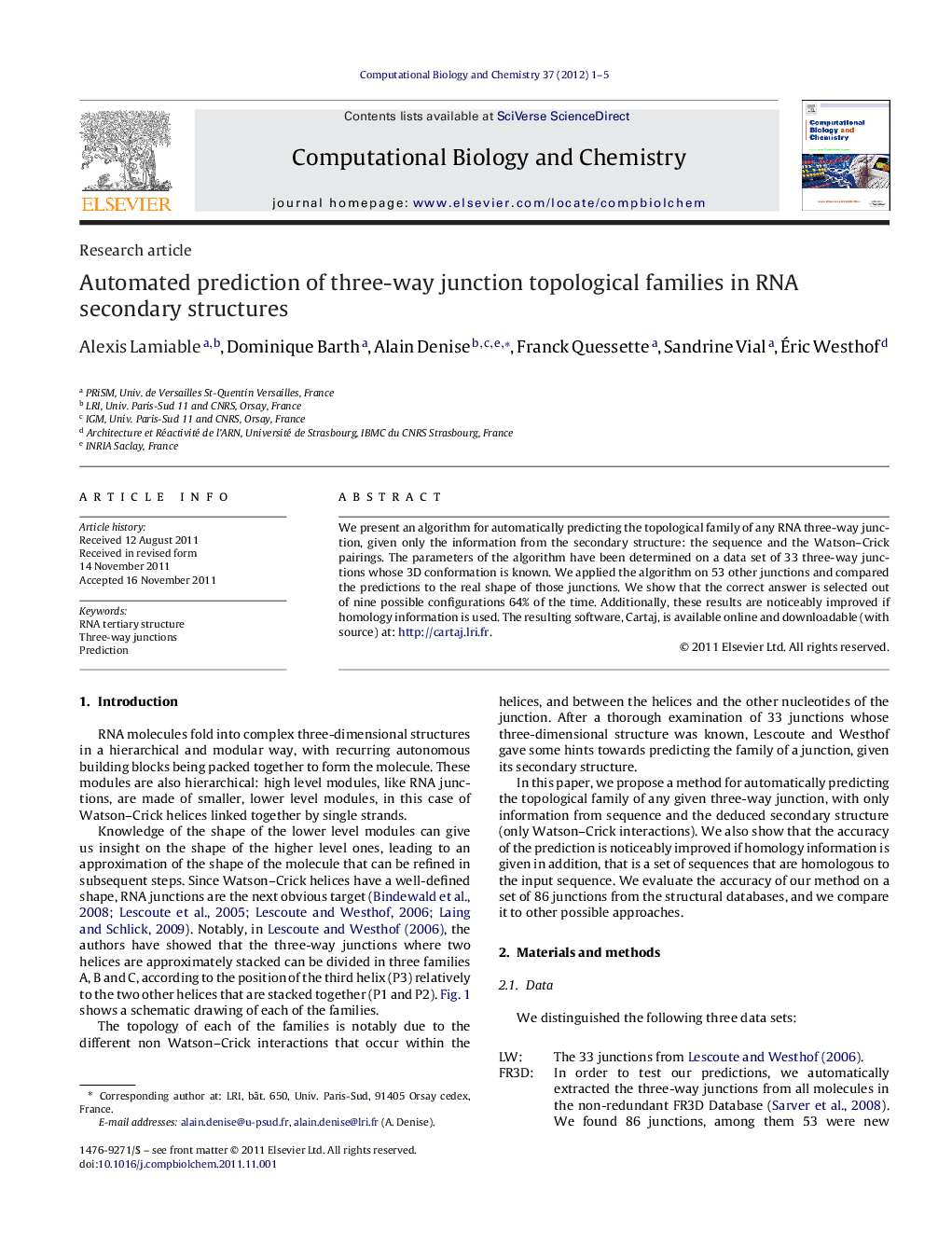| Article ID | Journal | Published Year | Pages | File Type |
|---|---|---|---|---|
| 15178 | Computational Biology and Chemistry | 2012 | 5 Pages |
We present an algorithm for automatically predicting the topological family of any RNA three-way junction, given only the information from the secondary structure: the sequence and the Watson–Crick pairings. The parameters of the algorithm have been determined on a data set of 33 three-way junctions whose 3D conformation is known. We applied the algorithm on 53 other junctions and compared the predictions to the real shape of those junctions. We show that the correct answer is selected out of nine possible configurations 64% of the time. Additionally, these results are noticeably improved if homology information is used. The resulting software, Cartaj, is available online and downloadable (with source) at: http://cartaj.lri.fr.
Graphical abstractThe prediction workflow. A given RNA three-way junction can have three stackings; for each stacking, the junction can be in three families (A, B or C), depending on the angle of the third helix. This gives nine configurations. We compute a score for each configuration, and the configuration with the best score is our prediction. Figure optionsDownload full-size imageDownload as PowerPoint slideHighlights► We present an algorithm for automatically predicting the topological family of any RNA three-way junction, given only the information from the secondary structure. ► We show that the correct answer is selected out of nine possible con gurations 64% of the time. Additionally, these results are noticeably improved if homology information used. ► This work may have important applications in the field of three-dimensional modelling of RNA molecules. ► The resulting software, Cartaj, is available online and downloadable (with source) at: http://cartaj.lri.fr.
